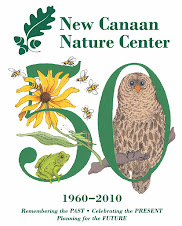It is officially winter now and what does that mean? For many, we relate to this coldest of seasons as a long-time opponent. It is someone to brace ourselves against with scarves and hunched shoulders while we wait for the sun to begin its northerly ascent. Cold temperatures, snow and ice, frozen ground, leafless trees and a seemingly lifeless world is what we see as we peer through glass that keeps that cold from reaching our bones.
However, I would like to offer some helpful tips for anyone willing to brave this winter season. These tips will help you and yours make the very most out of this winter season not as a distant spectator but as an active participant in what I have experienced to be the most exciting and invigorating season of all. The cold, snow, ice, frozen ground and leafless trees are actually the backdrop to a world of miraculous life that is there for anyone to see IF they take the time to look close enough.
Here are the top 5 tips for actually enjoying the coldest season the month with your family.
Tip 1: DRESS WARM! Wear nice warm layers with a windbreak outer layer, warm hat, socks and gloves (down/synthetic puffy coats are the best outer layer when the wind is piercing cold and good warm boots will make your outdoor winter adventure comfortable.)
Tip 2: GET INTO NATURE! There is nothing more beautiful and exciting than getting out to a natural space (like the New Canaan Nature Center) on a winter day and exploring all the winter life from chattering squirrels to chipping chickadees.
Tip 3: LOOK FOR LIFE! One of the best ways to get a glimpse into all the animal and bird life happening during the winter is to go tracking! Kids big and small, once they start tracking in snow will be entertained for hours in the coldest of temps! Every mark in snow is a track whether it is from a rolling oak leaf or a vole burrowing a snow tunnel so get down on your hands and knees and explore the subtle signs left that early morning.
Tip 4: NOTICE THE DETAILS! In this region of Connecticut, we have well over 50 different types of trees. Even though the leaves are gone, the buds, bark and shape of trees are unique and challenging to distinguish. Or if you want to be spellbound, what about the using your black windbreak jacket or glove and catch a snowflake to examine its crystal shape – no one snowflake is the same.
Tip 5: BUILD A FORT! When that wind gets blowing and leaves or snow are swirling around, there is nothing more exciting and cozy than to build a leaf or snow fort. Build up the walls, pile leaves or pack the snow down and hunker down and feel how warm and cozy it feels (32 degrees is much warmer than 10 degrees with wind chill!)
Ultimately, get outside to a nature center like ours with your family, dress warm and PLAY this winter season! You will get some much needed exercise, Vitamin D and fun after being cooped up inside.
All the best to you and yours this season!
Keith Marshall
Director of Education
New Canaan Nature Center



